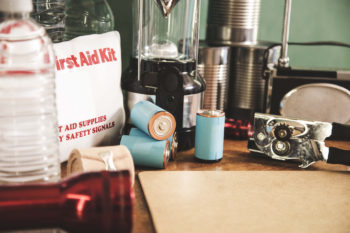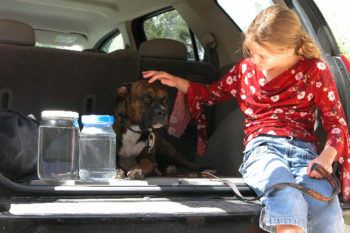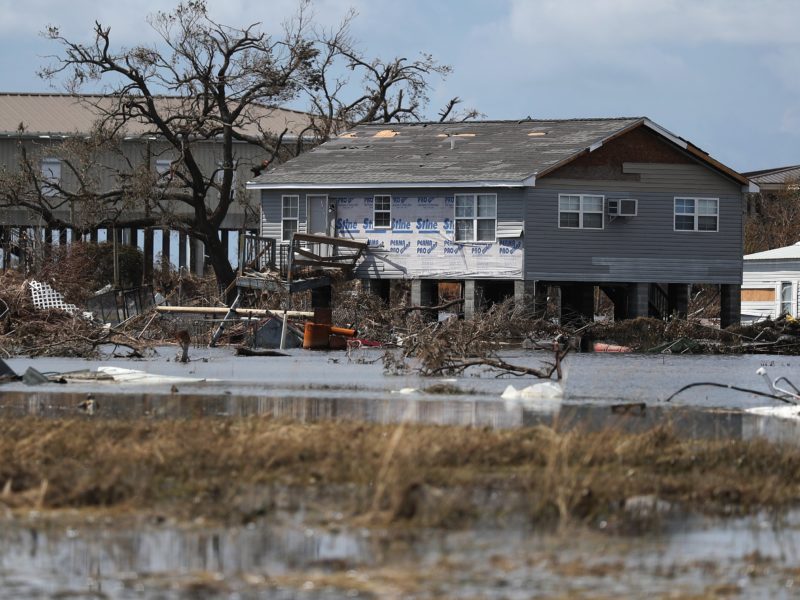Texas A&M AgriLife Extension Supporting National Preparedness Month

National Preparedness Month begins Sept. 1, but Hurricane Laura and drought conditions aren’t going to wait for Texans to prepare for potential disasters.
September is designated National Preparedness Month by the Federal Emergency Management Agency, and the Texas A&M AgriLife Extension Service is doing its part to support preparedness efforts.
“Weather conditions throughout the state, including tropical storms in the gulf and extended drought in much of the state that may lead to wildfires, have amplified the need for Texans to take advantage of such an emergency preparation opportunity,” said Monty Dozier head of the agency’s Disaster Assessment and Recovery unit. “We hope Texans will take a serious look at what they can do to prepare so they can protect their families, homes and businesses from an emergency or disaster.”
Dozier said an important source for helpful, objective, science-based information on disaster and emergency preparedness is the Texas Extension Disaster Education Network, or Texas EDEN. He said these sites contain useful information provided by the agency and other Texas A&M University System experts, as well as experts from state and federal agencies and throughout the national land-grant university system.
He also notes a variety of disaster preparation and recovery materials are available at the Texas A&M AgriLife Extension Bookstore, with most available in English and Spanish.
“In most cases, the information is free or at minimal cost and is also available in e-book format for mobile devices,” he said.
Preparedness includes planning and practice
Dozier said the most important step in disaster preparation is to develop and practice an emergency family plan that accounts for any specific or special needs that may arise.
“Some of those specific or special needs might include making provisions for small children, those who are disabled, seniors or family pets,” he said. “These plans help everyone be aware of what to do, where to go and how to respond if there’s a disaster or emergency.”
Joyce Cavanagh, AgriLife Extension specialist in disaster assessment and recovery, said an emergency plan should include establishing escape routes from your house and neighborhood in the event evacuation is required, and making sure all household members participate in an emergency practice session.
Cavanagh said the plan should identify rooms with at least two exit points and include a pre-identified site for family members to meet once they have left the house.
“You should also prepare a contact card with the name, address, phone and email for each family member,” she said. “Have everyone keep a copy of it in their wallet, purse or backpack or vehicle glove compartment for quick reference.”
Grab-and-go items

Cavanagh said another important element of disaster planning is to prepare a grab-and-go survival kit for their home, office and each vehicle.
“This emergency kit should contain enough supplies to take care of immediate family members for at least three days,” she said. “Some essential kit contents include bottled water, non-perishable foods, a hand-operated can opener, mouth/nose protection masks, extra clothing, first-aid kit, gloves, blankets, toiletries, battery- or hand-powered flashlight, weather radio, spare batteries, garbage bags, medications and anti-bacterial cleaners or wipes.”
She said disaster planning should also include putting together another grab-and-go box containing important personal and family documents and financial records.
“The emergency plan should make accommodations for family pets,” Cavanagh said. “This might include identifying hotels or motels that accept pets or would waive a no-pets policy in an emergency, as well as listing phone numbers and addresses of veterinarians’ offices.
“You may also want to identify possible pet-boarding facilities or coordinate with friends outside the area to care for the pets. Be sure to include pet food and pet comfort items as well as pet vaccination records in your emergency supply kit.”
Cavanagh said while preparation takes time and requires forethought and commitment, having a plan and necessary emergency supplies in place will help make a traumatic and highly stressful situation a good deal more manageable.
More information on emergency and disaster preparedness can be found on Facebook, Twitter and Pinterest.
This article by Paul Schattenberg originally appeared on AgriLife Today.




